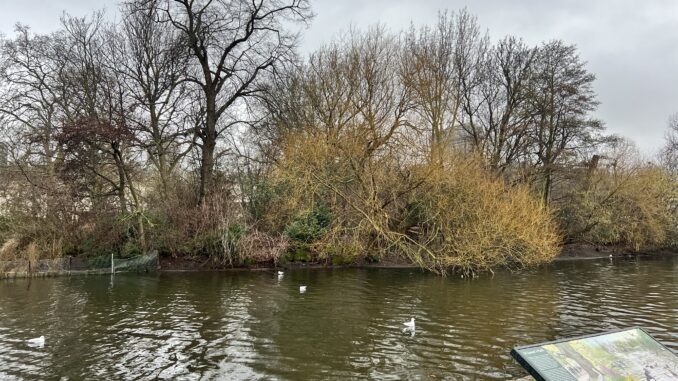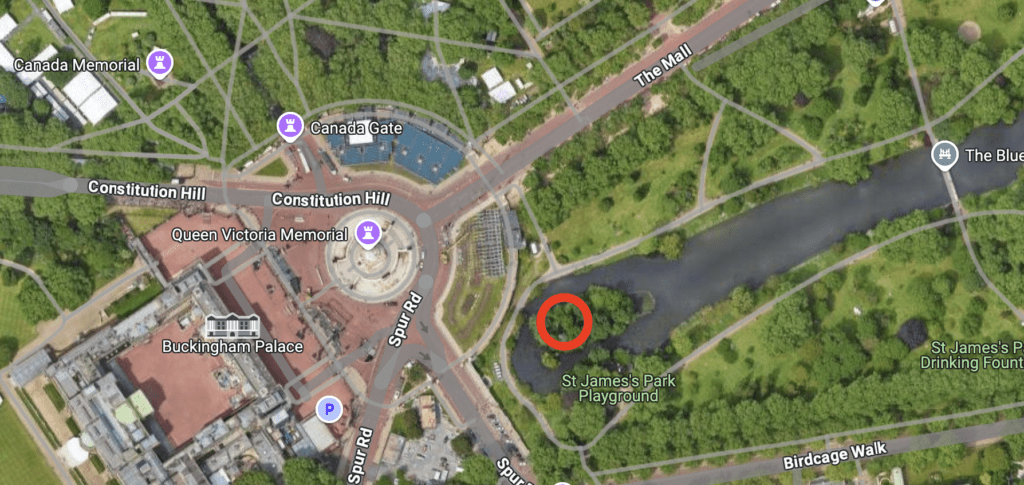
When John Nash remodelled Buckingham Palace and St James’s Park for George IV in the 1820s, he replaced the previous formal ‘canal’ waterway in the park with the slightly shorter, softly curving lake that we see today.
Landscape design at this time was moving away from the regular ‘continental’ styles and embracing the ‘romantic’. The idea was to recreate the countryside (or, rather, the aristocratic urban dwellers’ ideal of the countryside) in parks and country house gardens.
St James’s Park, the oldest and smallest of the Royal Parks, could be thought of a the ‘front garden’ to George and Nash’s ambitiously redeveloped Buckingham Palace, so redesigning it and the (private) back garden of the palace meant that one could imagine the building sat in a country landscape, with lakes, woodlands and gently meandering walkways.
For more of this sort of stuff, follow StuffAboutLondon on social media. For details click here
Sign up here for my monthly newsletter, or follow me on Instagram, or the StuffAboutLondon Facebook page.
At the east end of the lake was Duck Island (now with the ‘Swiss’ birdkeeper’s cottage) and at the west, or Palace, end was the imaginatively titled ‘West Island’, which these days is a wildlife habitat, left as a bird sanctuary, so not subject to the intense horticultural activity of the rest of the park.
Royal Parks staff visit it perhaps every year or so, to thin out some of the tree branches, clear out undergrowth and so on, and it was on one such visit in spring 2011 that a gardener made a gruesome discovery ((c)TabloidClichesRUs).
This was the body of an American, a certain Robert James Moore, who the pathologists estimated to have lain on the island for around three years.
The island is just a few yards from the bank, and the water is shallow, so it is thought Mr Moore simply waded across one night to set up camp. Because the island is visited so rarely (and is deliberately overgrown), it was easily possible for him to remain there – both alive and dead – without being discovered.
Mr Moore’s reason for camping out on the island seems to be so that he could have a view of the palace*, as it seems he had a fixation with the late queen. Over 15 years he had apparently sent 100s of letters and packages (described as “strange and offensive” communications at the inquest) to HMQ, including pornographic photos and, at one point, a 600 page screed.
The coroner recorded an ‘unascertained’ verdict. There seemed to have been no traumatic injury, but the body was so far decomposed to make it impossible to establish a cause of death.
(*I’m not convinced that the view of the palace would have been that good. The island is at a lower level and quite close to a large retaining wall that would obscure the view.)


